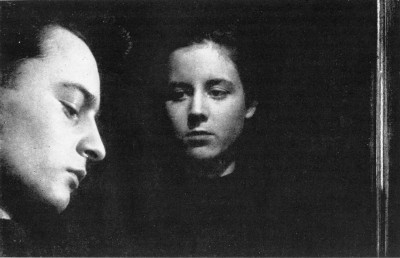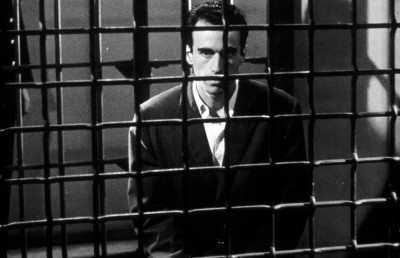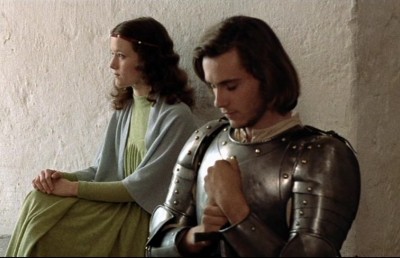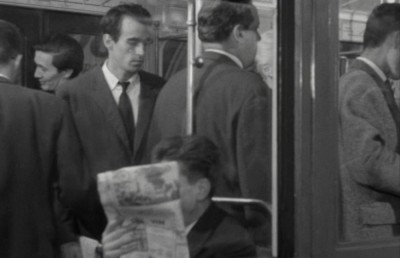Reflections on the Pickpocket Statistical Analysis
Statistical Analysis
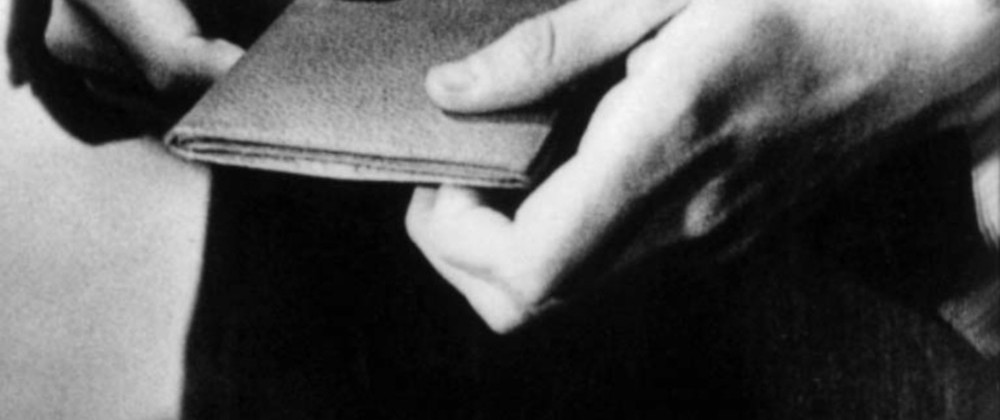
The statistical breakdown of Pickpocket conducted by Anna Romatowska is modeled after a partial methodology I employed in my PhD dissertation analyzing the relationship between the long take, narrative, theme, and temporality. On their own such statistical breakdowns of films are rarely any more enlightening or revelatory than what the figures may appear to represent. But if placed into a broader context, which I refer to as “contextual statistical analysis”, statistical analysis can help in the critical exploration of elements such as scene construction, narrative structure, theme, and filmic style. I will offer some examples of this in a brief analysis of Romatowska’s statistical breakdown of Pickpocket.
To begin, the number of scenes 1 in Pickpocket, 37, is within the average range of scenes per feature film (roughly between 25-40), but given the film’s short running time the number tells us that Pickpocket is comprised mainly of short scenes, with the average running slightly under two minutes. By contrast Bresson’s Diary of a Country Priest has 36 scenes, but with a running time approximately 30 minutes longer. Amongst many things, Bresson’s style is characterised by an exactness which values qualities of conciseness, sparseness, and efficiency. This is manifested in narratives which reduce action and character motivation to its bare essentials through a combination of synecdochic editing strategies, reserved acting performances, and elliptical narrative structures. As a result of these qualities, Bresson will never be mistaken for a long take specialist, and the average shot length of Pickpocket bears this out at 10 seconds (ASL= 10”). The only other Bresson film which I have to compare this to is Diary of a Country Priest, which has an ASL of 15 seconds. However, based on intuitive viewing experiences, I would say that most of the Bresson films I have seen fall into the 10-15 ASL range. This figure is within the norms provided by the hand full of film theorists and historians who have done extensive research in statistical analysis. For example, in their seminal The Classical Hollywood Cinema: Film Style and Mode of Production to 1960 authors David Bordwell, Janet Staiger, and Kristin Thompson, come up with an ASL of 11”-12” for US films during the period 1947-1960. 2 Barry Salt comes up with the following figures, also for US films: 1946-1950: 10.5”, 1952-1957: 11”, 1958-1963: 9.3” 3 The only writer who has conducted similar research for French cinema is Colin Crisp, whose figures stop at 1950: 1939-1945: 9.5”-12.5”, 1946-1950: 9”. 4 We can see that where Pickpocket is within these norms, Diary of a Country Priest has a slightly higher than norm ASL.
One of the most strikingly consistent patterns which emerge from the scene by scene, shot by shot breakdown is that the average shot length for shots which open and/or close scenes is considerably longer than the film’s overall average. When added together, the ASL for the first/last shots of a scene is 17”, which makes a sizeable difference of 7” from the film’s overall ASL of 10”. Of the film’s 37 scenes, only 3 scenes (8%) begin and end with a shot that is shorter than that particular scene’s ASL. This ASL of 17” is especially remarkable when you consider that 260 of the film’s 433 shots (60%) are under 10”. By contrast, only 11% of the shots (50) are 20” or longer (which represents double the film’s ASL).
Based on my own broader research, the practice of having the first and last shots of a scene longer than a film’s norm is common. What we have here is a case of the old adage of beginning and ending a film strongly operating at a microcosmic level. A reason for this is that it is common for a large amount of narrative information to be given in these shots, and also that the opening and closing shots often bear the brunt of a scene’s dramatic weight. This pattern can be seen from the film’s opening scene, where the final 20” shot reveals considerably more narrative information than any other shot in the scene: after tentatively performing his first act of crime at a race track, Michel walks away seemingly free from any incrimination, full of self confidence and superiority (“I felt as if I was walking on air, master of the world”), only to have his moment of conquest quickly squelched when two detectives enter the frame from behind and arrest him. This memory of Michel’s initial failure perhaps lingers in the later scene 7 in the subway, where again the final shot (32”) lasts twice the length of the scene’s ASL (16”), only now Michel walks away with his first successful act of thievery.
Scene 20 is another excellent example of how Bresson uses the opening and closing shots of a scene to a rhythmic purpose that underscores dramatic and thematic weight. The scene’s ASL is 9”, and of the scene’s 20 shots all but 7 are under 10”. The opening shot carries over the tension between Michel and a police detective that was established in the previous scene in the café, where they discussed Michel’s Dostoyevskian views on the super human in such a way that makes Michel a suspect in the detective’s eyes. In the scene the detective invites Michel to visit him at his office, which is where the next scene takes place. The shot begins at a slightly high angle looking down at the seated, visibly nervous Michel, as he glances up at people casually walking by him. He acknowledges his tense state in his voice-over: “He made me wait a long time.” After a long silent pause, Michel stands up and is ushered into the detective’s office. After a tense exchange between Michel and the detective, Michel leaves the office. The scene’s final shot presents a classic Bressonian visual trope (the opening and closing of doors): Michel slowly opens the door to his apartment and walks in, panning his head around the room, clearly suspecting that a detective is waiting for him or has searched his room for evidence. The camera pans right as he pulls away his bed to check that his stolen money and watch are still in their secret space behind the floorboard. At 24” and 40” respectively the opening and closing shots are so much longer than the other shots in the scene that they assume a dramatic weight which viewers feel intuitively (see a similar effect at play in the final shot of scene 28, shot 319, also with a door being used). Nobody watches a film with a stopwatch, but the beauty of temporal articulation is that everyone carries their own internal biological/body ‘clock’. For purely dramatic weight, there is no better example of expressive use of shot length at the end of a scene than the final shot of the film, a 23” moving shot that ends on a CU of the two lovers, Michel and Jane, embracing through the mesh of the prison fence.
Even with a director who appears as thematically and (arguably for his ‘mature’ period) stylistically consistent as Bresson, each film brings its own unique visual qualities. For example, with its longer ASL, it is not surprising that Diary of a Country Priest makes greater use of the long take than Pickpocket; but of equal importance is the formal motif of a slow track-in that punctuates many shots in Diary of a Country Priest. These shots move forward toward characters along an axial direction, usually from a medium long shot to a medium shot or a medium shot to close-up shot range, into the space that Bresson has ‘erected’ around his central characters. This camera movement occurs most often with the character of the young priest (Claude Laydu), but also with important secondary characters Séraphine (Martine Lemaire), the Countess (Marie-Monique Arkell) and her daughter Chantal (Nicole Ladmiral).
One could explain this formal motif as being tied to the fact that there is much more dialogue in Dairy of a Country Priest than in Pickpocket, which could also partially explain the longer ASL, in that Bresson wanted to add a visual rhythm to what would have otherwise been static dialogue shots. But there is a more intriguing thematic relevance to this camera movement, hinted at in my use of the word ‘erected’ within the context of space. The inward movements can be seen as Bresson’s subtle way of underscoring the impenetrable emotional and/or spiritual barrier that each of the characters have built up around themselves. Much like the way the town of Ambricourt has erected an emotional barrier between itself and its new parish priest. This is especially the case with the Countess and her daughter Chantal, who in their own unique ways have ceased to engage in any positive emotional or spiritual contact with either God or other fellow human beings. The central ‘spiritual malaise’ which is so strongly felt by the priest reverberates in a myriad of ways, secular and sacred, in all the townsfolk. Bresson’s frequent inward tracking shots are a constant reminder of how people experiencing emotional or spiritual pain often ‘protect’ themselves by retreating into an interior shell.
By contrast, there is no discernible camera movement motif of thematic relevance in Pickpocket. Which is not to say that camera movement is never used expressively, but not in the consistently expressive manner it is in Diary of a Country Priest. An example of the former in Pickpocket is the wonderful moment near the end of the film, where Michel begins to experience the freedom and ‘state of grace’ through his new found love and care for Jane (right after Jane’s first prison visit). The moment in question occurs in scene 36, which is one of only two scenes composed entirely of one sequence shot (the other being scene 14). The shot (# 423) begins with Michel seated on his prison bed, telling himself through voice-over: “There is something I did not tell her. Why should I live? I had not decided anything yet.” Michel hears the offscreen sound of footsteps moving toward his cell door, and walks toward the door, eagerly hoping that the guards are coming to tell him that Jane has come to visit again. When the sounds move beyond his door and fade away the camera pans with him as he returns to his seated position on the edge of his bed: “Jane did not return.” At 46” this is the second longest shot in the film. The length, along with the deliberate movement of the camera as he walks to the door and back, underscores both his restless anticipation of Jane’s subsequent defining visit, and the reality of his physical confinement and imprisonment.
These are just a few examples of the type of analytical insights which come to the fore when using statistical breakdowns and analysis as part of a broad historical-contextual methodological approach.

Pickpocket: A Statistical Analysis
Notes
- A scene is here defined as a unified narrative action which normally, though not exclusively, takes place in a single block of continuous and contiguous time and space. ↩
- The Classical Hollywood Cinema: Film Style and Mode of Production to 1960. London: Routledge & Kegan Paul, 1985. ↩
- Barry Salt, Film Style & Technology: History & Analysis, 2nd expanded ed. (Oxford: Starwood, 1992). ↩
- Colin Crisp, “Ch. 7. Work Practices and Stylistic Change,” in The Classic French Cinema 1930-1960 (Indiana University Press, Bloomington & Indianapolis, 1993), 358-414. ↩



